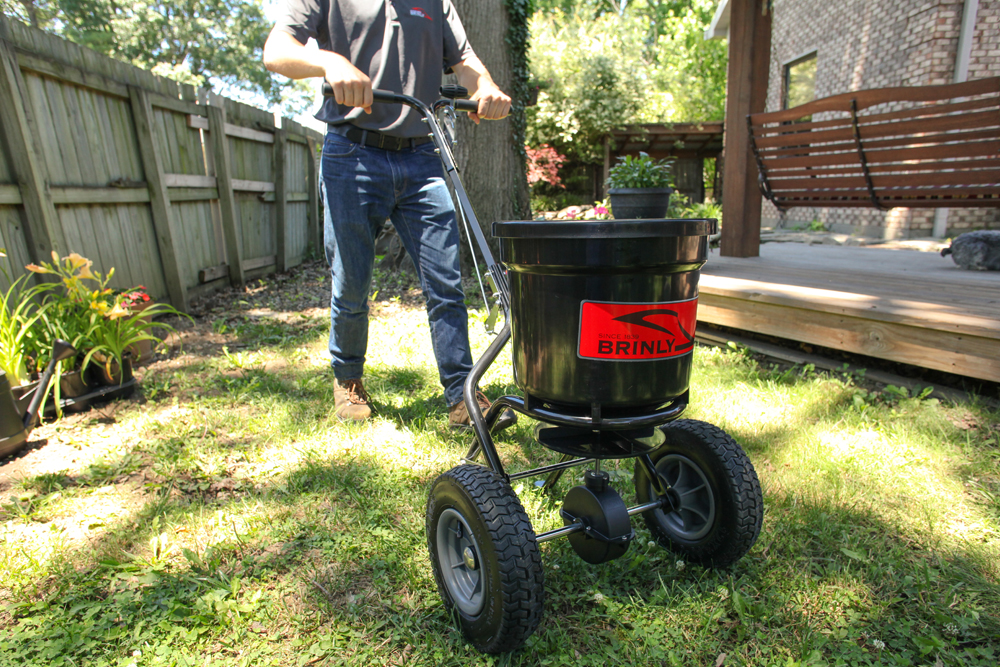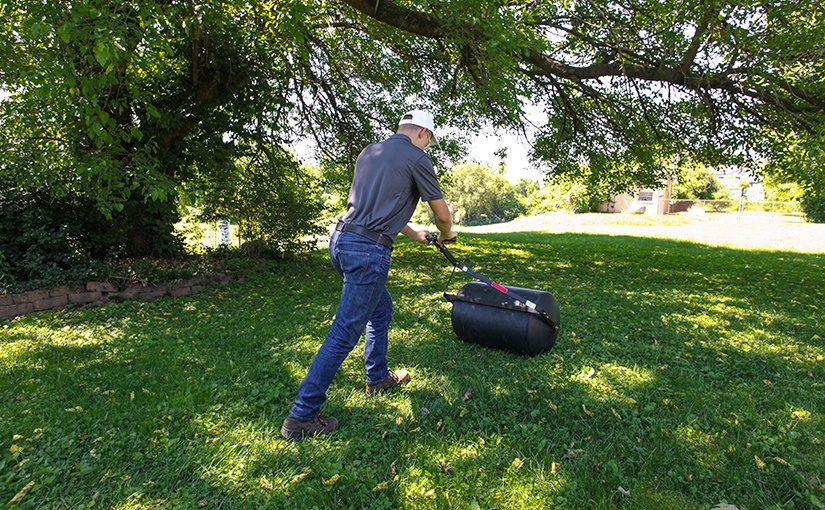Fall is slowly moving toward winter; which means you’re almost done with your lawn and garden chores… Just don’t forget about the final steps of pre-winter lawn treatment.
Before you put away your
spreader for the season, your lawn needs one more shot of fertilizer if you live in the North. If you live in the South, your yard needs one more round of weed control to keep winter weeds from popping up.
Cool-Season Lawns
If you live in the northern half of the U.S. and your lawn is made up of Kentucky blue, perennial ryegrass and fescues, you have a cool-season lawn. And cool-season lawns benefit from a winterizer fertilization treatment before the ground freezes.
Winter fertilizer, also known as winterizer, contains more potassium (potash or K) compared to spring fertilizer. Potassium helps your lawn with photosynthesis (when the green pigment, water, starches, and carbohydrates in the grass plant change into food with the help of sunlight).
You want photosynthesis to continue in your turfgrass for as long as possible. And photosynthesis will occur if the sun is shining and there is no snow covering your lawn.
Read more: 10 Fall Yard Cleanup Chores to Do Before Winter.
Potassium also helps your turfgrass develop deep root systems—which are essential to your lawn’s survival over winter. Plus, potassium helps your lawn grass to:
- Better tolerate drought and heat stress during the summer.
- Hardens off the grass plant before winter. Hardening means that the plant cells release moisture, so the plant cells don’t burst in freezing temperatures leading to winter injury.
- Become more disease-resistant.
When you go to your local garden center or big box retailer, look at the back of the winter fertilizer’s package. There are always three numbers on the bag indicating the levels of nitrogen, the first number; phosphorous, the second number; and potassium, the third number.
In winter fertilizer, you’ll notice a higher rate of potassium than you would if you were using an early spring fertilizer. You should do a soil test first to see if your soil is deficient in potassium before you apply fertilizer.
Do you learn better by watching videos? Then check out Brinly-Hardy’s YouTube videos.
Don’t Use Winterizer If You Have a Warm-Season Lawn
If your lawn is made up of Bermuda, centipede, St. Augustine or zoysia grass, you shouldn’t put down any winterizer because your turfgrass is entering dormancy.
Warm-season grasses need fertilization in the spring and summer because they’re actively growing. However, in the fall they’re not growing anymore, and fertilizer will signal to your turf to start growing again.
However, your warm-season lawn will benefit from winter weed control applications designed to form a blockade in the soil so winter weeds, like poa annua and henbit, don’t take residence in your winter lawn.
Brinly-Hardy Has the Lawn Equipment to Help You Get Your Fall Lawn Care Done Right
Brinly-Hardy has push and tow spreaders as well as rollers to help you apply winterizer or weed control to your lawn:
- Our lawn rollers push down the fertilizer or weed control deep into the ground. Once you water your fertilizer or weed control, it’ll be in the soil to give you better coverage. We have four sizes of lawn rollers to fit your needs:
If you have any questions about Brinly-Hardy lawn equipment, call our customer service today at 877-728-8224 or fill out our
contact form.
For more information on fall winterizer or winter weed control, check out these articles:
Davenport, Millie, “
Prepare Warm-Season Lawns for Winter.”
Day, Julie, “
How to Winterize the Grass in Your Lawn.”
Landschoot, Peter, “
Turfgrass Fertilization: A Basic Guide for Professional Turfgrass Managers.”



